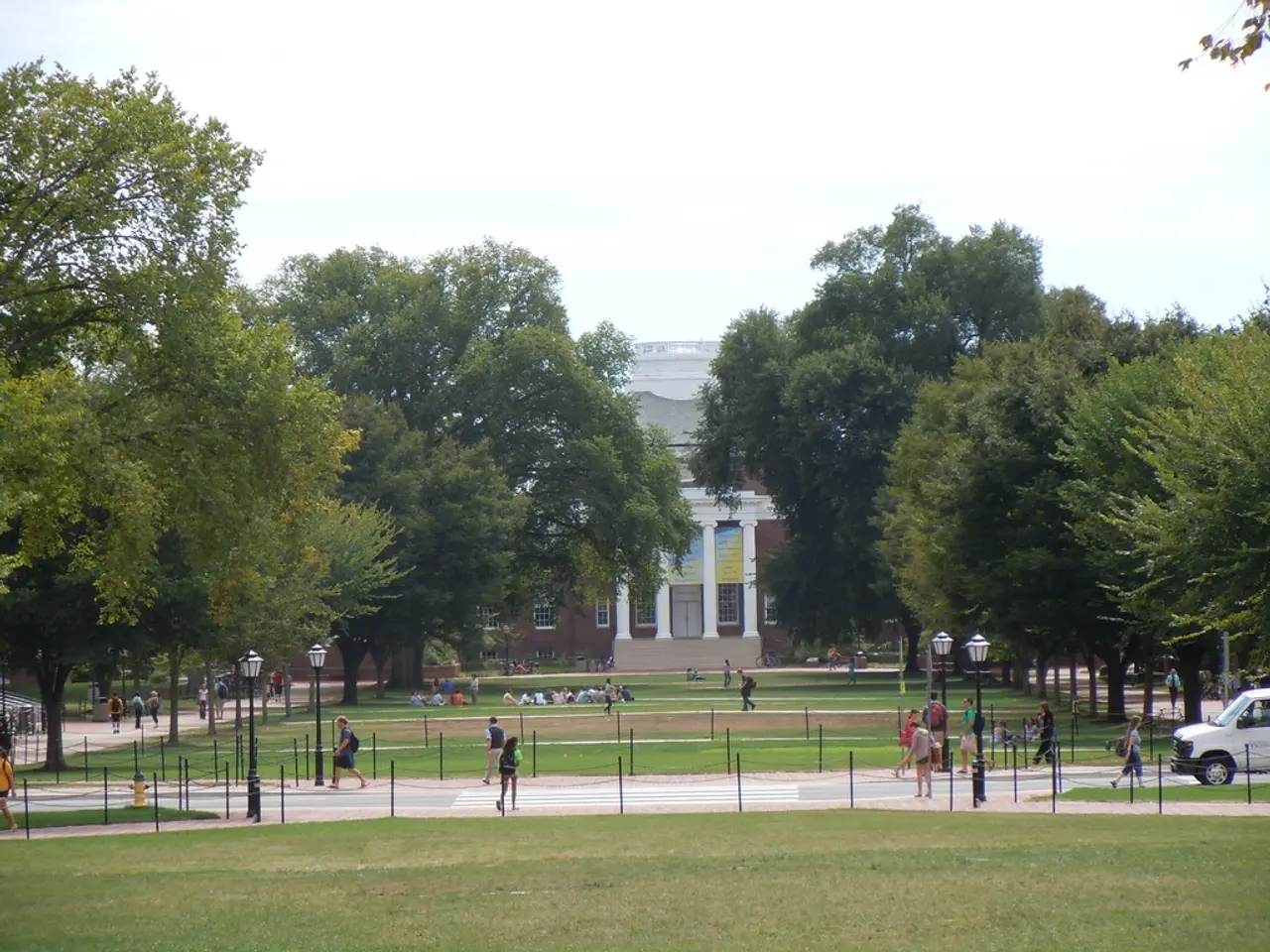Pay-as-You-Earn Plan: An Explanation of Its Operations and Ideal Recipients
Pay As You Earn (PAYE), an income-driven repayment plan, offers benefits and drawbacks for borrowers who are currently enrolled in the Standard Repayment (SAVE) plan. As the federal government prepares to phase out SAVE and PAYE by 2028, many borrowers are considering a switch to PAYE to secure their Public Service Loan Forgiveness (PSLF) progress and reduce interest capitalization.
Benefits of Switching from SAVE to PAYE
- Qualifying for PSLF: The Department of Education encourages borrowers pursuing PSLF to enroll in income-driven plans like PAYE to ensure payments count toward forgiveness. SAVE is ending, and its complications with forgiveness eligibility make IDR plans like PAYE a more stable choice for qualifying forgiveness going forward.
- Interest Capitalization Limits: PAYE limits how much interest can be capitalized (added to the loan balance), generally only 10% of accrued interest. This can reduce total costs over time compared to new IDR or SAVE where full interest capitalization occurs.
- Current Forgiveness Processing: As of mid-2025, SAVE and some IDR plans like PAYE have had forgiveness processing paused or complicated due to system updates and legal challenges. Enrolling in PAYE can be more stable for qualifying forgiveness going forward.
Drawbacks of Switching from SAVE to PAYE
- Higher Monthly Payments: PAYE generally requires payments of about 10% of discretionary income, which is often higher than SAVE’s payment rate of 5–10%. This could potentially increase immediate monthly payments.
- Loss of Previous Interest Subsidy: SAVE previously had a strong interest subsidy preventing balances from growing significantly, but this ended August 1, 2025. PAYE offers no such subsidy, meaning accrued interest can increase balances unless paid off, potentially raising total repayment costs.
- Plan Phase-Out Timeline: The SAVE, PAYE, and other IDR plans are being phased out by July 1, 2028, replaced largely by a streamlined IBR plan and RAP. Borrowers must prepare for higher payments and adjusted terms under new rules after 2028.
- Forgiveness Timeline and Eligibility: Both SAVE and PAYE offer forgiveness after 20 years (or 25 years depending on loan type), but switching plans can impact when payments count. However, switching does not reset qualifying payment counts toward PSLF as long as the new plan is eligible.
Additional Context
- Borrowers nearing forgiveness should carefully verify payment counts and employment certifications to avoid errors that could delay PSLF.
- Payments in SAVE are paused currently, but interest accrual resumes August 2025 without switching, causing balances to grow and possibly making forgiveness harder if one remains on SAVE without payments.
- Legislative changes have eased access to IBR and similar plans by removing the partial financial hardship requirement, making switching easier.
- After the phase-out of SAVE and PAYE, only IBR and RAP plans will remain for most borrowers, generally with higher required payments, making the window for favorable IDR plan use limited.
In summary, switching from SAVE to PAYE now can better secure PSLF progress and reduce interest capitalization, but may increase monthly payments and must be considered in light of the upcoming elimination of SAVE and PAYE by 2028. Borrowers should reassess individual financial situations and forgiveness milestones before deciding.
Key Points:
- PAYE caps payments at 10% of discretionary income, depending on tax filing status.
- PAYE forgives any remaining balance after 20 years of payment, regardless of loan type.
- PAYE requires a partial financial hardship, typically when total federal student loan debt exceeds annual discretionary income.
- PAYE requires you to have federal direct loans and a partial financial hardship.
- Capitalized interest in PAYE is limited to 10% of the loan balance.
- Lawsuits temporarily blocked the SAVE repayment plan over the summer, leaving 8 million borrowers with an interest-free payment pause.
- You'll likely qualify for PAYE if you had no outstanding direct loan or FFEL Program loan debt as of Oct. 1, 2007, and took out a direct loan on or after Oct. 1, 2011.
- To ensure progress toward Public Service Loan Forgiveness, individuals may consider switching from the Standard Repayment plan (SAVE) to the Pay As You Earn plan (PAYE), as the Department of Education recommends IDR plans for PSLF eligibility.
- One benefit of PAYE over SAVE is its limited interest capitalization, with only 10% of accrued interest being added to the loan balance, potentially reducing total costs over time.
- On the other hand, PAYE's monthly payments, which are generally about 10% of discretionary income, could be higher than the payments under SAVE's 5–10% rate.
- As the federal government is phasing out SAVE and PAYE by 2028, it is important for borrowers to consider a switch to PAYE, especially in light of the planned replacement of these plans with a streamlined IBR plan and RAP, which may have higher required payments.
- Borrowers should utilize education and self-development resources to make informed decisions about their personal-finance situation, including credit calculators and career-development guides, to assess the potential impact of switching from SAVE to PAYE, considering the benefits, drawbacks, and the ongoing changes in loan repayment plans and forgiveness eligibility.




